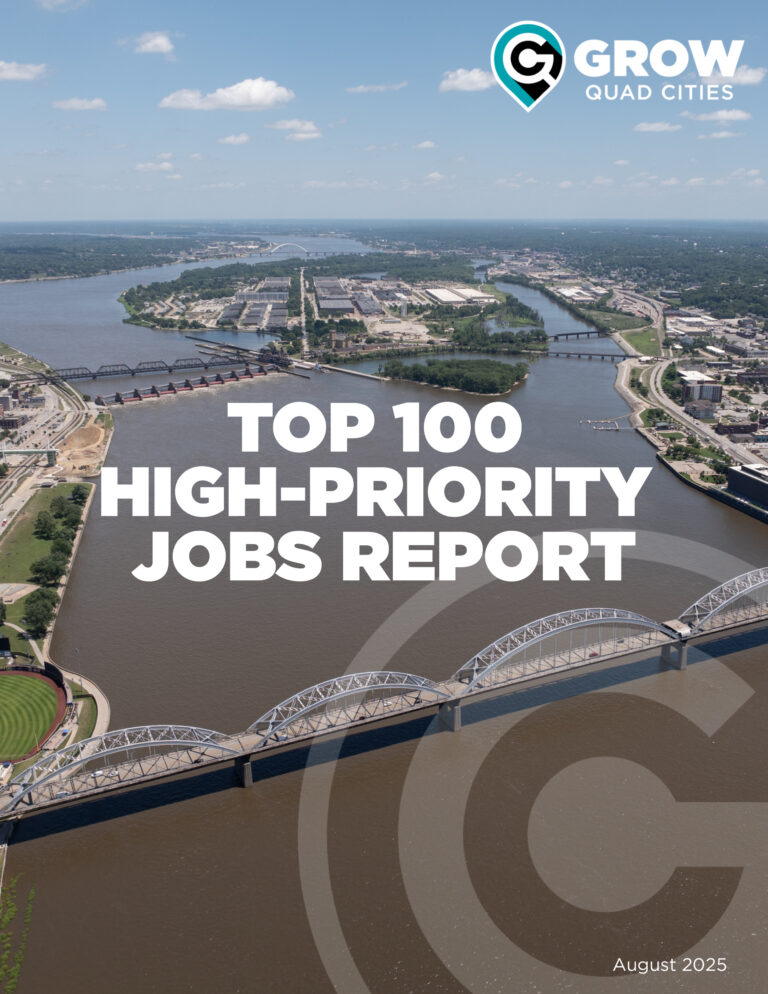The Quad Cities was among three Illinois metropolitan statistical areas posting an increase in their unemployment rate in December while nine other MSAs across the state saw jobs grow.
According to the latest unemployment report from the Illinois Department of Employment Security (IDES), the unemployment rate (not seasonally adjusted) increased to 4.5% in December in the Davenport-Moline-Rock Island MSA. That compares to 3.9% unemployment in December 2023.
In addition, IDES’ monthly unemployment report shows total nonfarm employment was down by -1,700 in the bistate QC region in December. Total nonfarm jobs locally stood at 181,600, down from 183,300 a year earlier.
Total nonfarm jobs across Illinois hit 6.19 million in December, an increase of 45,900 jobs from 2023 when they were 6.14 million.
The IDES statistics – based on data from the U.S. Bureau of Labor Statistics (BLS) – also showed over-the-year job declines in these Quad Cities sectors: Professional-Business Services (-1,700); Manufacturing (-700); Leisure-Hospitality (-200); Transportation-Warehousing-Utilities (-200); and Wholesale Trade (-100).
Meanwhile, showing payroll gains in the local MSA in December were these industries: Government (+500), Private Education-Health Services (+400), Other Services (+200) and Mining-Construction (+100).
Monthly 2023 unemployment rates and total nonfarm jobs for Illinois metro areas were revised in February and March 2024 as required by the U.S. BLS.
In a news release issued Thursday, Jan. 30, IDES said the unemployment rate decreased in nine MSAs. It increased in three and was unchanged in two for the year ending December 2024. Total nonfarm jobs increased in six MSAs areas. It decreased in five, and was unchanged or nearly unchanged in three.
Statewide, unemployment was at 4.3% in December 2024 compared to 4.2% a year ago.
State labor force grows
“The Illinois labor force continues to see growth as payroll jobs remain steady and the market is ripe with employment opportunities across industry sectors,” Illinois Deputy Gov. Andy Manar said in the release. “IDES is focused on providing the critical job matching services to employers and businesses who are eager to take advantage of the state’s economy.”
The Quad Cities saw the highest percentage increase in unemployment statewide. The rate was up +0.6 point to 4.5%. Behind it were the Chicago Metro Division (+0.5 point to 4.3%), and the Peoria MSA (+0.1 point to 4.8%). There was no rate change in the Bloomington and Danville MSAs.
The metro areas with the largest unemployment rate decreases were: Rockford MSA (-1.0 percentage point to 4.9%), the Kankakee MSA (-0.8 point to 5.0%), and the Champaign MSA (-0.6 point to 3.3%).
Meanwhile, the metro areas with the largest over-the-year percentage increases in total nonfarm jobs were: Champaign-Urbana MSA (+3.7%, +4,600), Carbondale-Marion MSA (+1.9%, +1,100), and Springfield MSA (+1.7%, +1,800).
The largest over-the-year decreases in total nonfarm jobs were recorded by: Peoria MSA (-1.2%, -2,000), the Davenport-Moline-Rock Island (Illinois and Iowa) MSA (-0.9%, -1,700), and the Lake County-Kenosha County (Illinois and Wisconsin) MSA (-0.8%, -3,600). Total nonfarm jobs were unchanged or nearly unchanged in Chicago-Naperville-Arlington Heights, the Danville MSA and the Illinois portion of the St. Louis MSA.
Statewide, the industries with the most job growth in the MSAs included: Private Education and Health Services (14 areas); Government (12 areas); and Other Services (11).
QC jobless rates rise
Other unemployment rates of interest locally included:
- Rock Island County, 5.1% in December 2024, up 0.1% over the year.
- Henry County, 4.8%, up 0.1%.
- Mercer, 4.5%, up 0.2%.
- Moline, 5.1%, up 0.6%.
- Rock Island (city) 5.1%, up 0.2%.
- Galesburg, 4.8%, down -0.7%.
The unemployment rate identifies those who are out of work and seeking employment. A person who exhausts benefits, or is ineligible, still will be reflected if they actively seek work.







